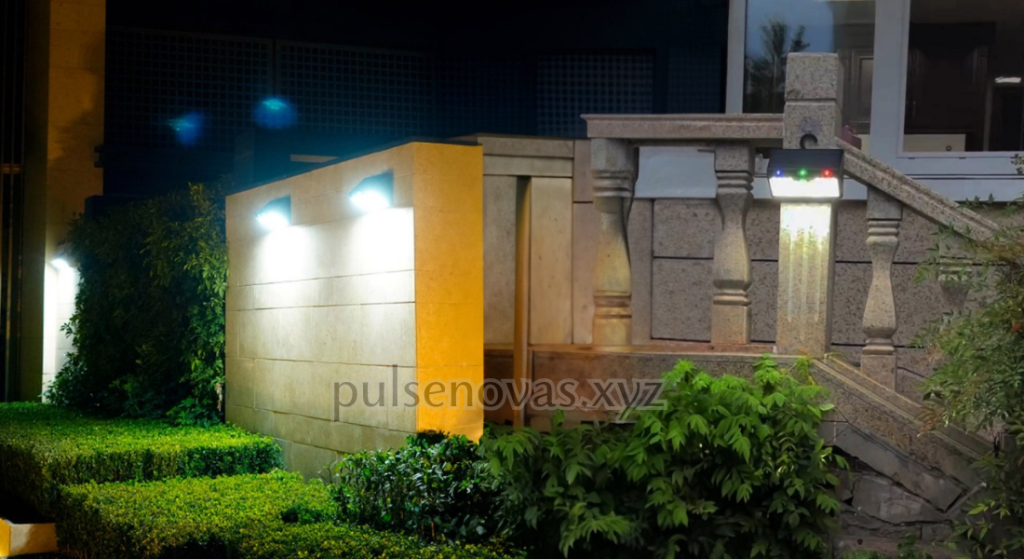blog
Discover the Convenience of Motion-Activated Outdoor Lighting for Better Visibility at Night
In today’s fast-paced world, safety and convenience are more important than ever, especially when it comes to lighting solutions for your home. Whether you’re coming home late, walking through your yard at night, or simply trying to increase the security of your property, motion-activated outdoor lighting offers an innovative and practical solution. These lighting systems provide enhanced visibility, deter potential intruders, and offer an eco-friendly way to light up your outdoor spaces without the hassle of manual switches.
Motion-activated lights are becoming increasingly popular among homeowners because they provide convenience, energy efficiency, and safety. In this article, we will explore how motion-activated outdoor lighting works, its benefits, and why it is an essential addition to any home looking for better visibility at night. Additionally, we will highlight how these lights can improve your home’s security, offer cost savings, and enhance the overall aesthetics of your outdoor spaces.
What is Motion-Activated Outdoor Lighting?
Motion-activated outdoor lighting is a type of lighting system designed to automatically turn on when movement is detected. These lights are equipped with motion sensors that can detect changes in the environment, triggering the lights to illuminate when someone walks by or approaches the area. The lights will remain on for a preset amount of time after detecting motion, providing adequate illumination without the need for manual control.
Motion-activated lights are commonly used for outdoor security lighting, landscape lighting, and pathway lighting, among other applications. These lights are particularly useful in areas such as driveways, gardens, backyards, and walkways, offering convenience and peace of mind in both residential and commercial settings.
The Benefits of Motion-Activated Outdoor Lighting
1. Enhanced Security for Your Property
One of the primary reasons homeowners invest in motion-activated outdoor lighting is the added security it provides. When installed around the perimeter of your home, motion-sensing lights act as a deterrent to intruders. The sudden illumination triggered by a movement is often enough to startle potential burglars or vandals, alerting you to their presence and signaling that your home is being monitored.
In addition to deterring intruders, motion-activated lights make it easier to see who is at the door or near your property at night. This increased visibility enhances your ability to respond quickly in case of an emergency or unexpected situation.
2. Increased Visibility at Night
Motion-activated lights significantly improve visibility around your home, especially at night when natural light is limited. Whether you are arriving home after dark or need to navigate your yard or driveway, these lights provide clear illumination as soon as motion is detected. This makes it easier to avoid obstacles, such as garden beds, steps, or uneven terrain, reducing the risk of falls or accidents.
For those who enjoy spending time outdoors after sunset, motion-sensing lights create a safer and more enjoyable environment. Whether you’re walking the dog, hosting a gathering, or simply enjoying the fresh air, motion-activated lighting ensures you won’t be left in the dark.
3. Energy-Efficiency and Cost Savings
One of the standout benefits of motion-activated outdoor lighting is its energy efficiency. Unlike traditional lights that stay on all night, motion-activated lights only turn on when needed, consuming energy only when there is motion in the area. This not only helps reduce energy consumption but also lowers your utility bills.
Most motion-activated lights use LED technology, which is more energy-efficient than incandescent or fluorescent bulbs. LED lights use less power while providing bright, clear illumination, ensuring that you save energy without sacrificing performance. Additionally, because these lights are triggered by motion, there is no need to leave them on for long periods, further reducing energy waste.

4. Convenience and Hands-Free Operation
With motion-activated lighting, you don’t have to worry about turning lights on and off. The sensors automatically detect movement and activate the lights, allowing for hands-free operation. This level of convenience is perfect for outdoor areas like driveways, walkways, and patios, where you may not want to stop to switch lights on or off.
Whether you’re carrying groceries into the house or walking to your car, motion-sensing lights ensure you always have sufficient lighting without any effort on your part. This is particularly helpful when your hands are full, or if you’re arriving home late at night.
5. Aesthetically Pleasing Design
Motion-activated outdoor lighting systems come in a variety of designs, so you can find options that suit your home’s style and aesthetics. Whether you prefer sleek, modern fixtures or more traditional designs, you can select lighting solutions that complement your property. Many systems are available in a range of finishes, including black, bronze, and stainless steel, allowing them to blend seamlessly with your outdoor décor.
In addition to practical benefits, motion-activated lights can be used to highlight key features of your outdoor space. You can use these lights to illuminate walkways, garden features, or even architectural elements of your home, adding a touch of elegance to your landscape. The dynamic lighting creates an inviting atmosphere for guests and enhances the overall curb appeal of your property.
How Motion-Activated Outdoor Lighting Works
1. The Technology Behind Motion Sensors
At the heart of motion-activated lighting is the motion sensor. These sensors detect changes in infrared radiation, which occurs when a person or animal moves within their range. There are three primary types of motion sensors used in outdoor lighting: passive infrared (PIR) sensors, ultrasonic sensors, and microwave sensors.
- Passive Infrared Sensors (PIR): These sensors detect heat signatures, specifically the infrared radiation emitted by living beings. When a person or animal walks into the sensor’s detection range, the heat signature triggers the light to turn on.
- Ultrasonic Sensors: These sensors use high-frequency sound waves to detect motion. They send out pulses of sound and measure how the sound waves bounce back. If there is movement, the reflected sound waves will change, triggering the light.
- Microwave Sensors: Similar to ultrasonic sensors, microwave sensors emit microwaves and detect changes in the reflected waves. These sensors have a wider detection range and can pick up on motion through walls or other obstacles.
Each type of sensor offers different advantages, but all provide the same key benefit: the ability to automatically activate lighting based on detected motion.
2. Installation Tips for Motion-Activated Lights
Installing motion-activated outdoor lighting is a relatively simple process, but there are a few tips to ensure optimal performance and efficiency:
- Choose the Right Location: Ensure that the sensor is installed in a location where it can effectively detect movement. Common locations include near doorways, along pathways, and at the corners of your home.
- Adjust Sensor Sensitivity: Most motion sensors come with adjustable sensitivity settings, allowing you to fine-tune the range at which they detect movement. Make sure the sensor is sensitive enough to detect movement in the area you want illuminated, but not so sensitive that it turns on with every passing animal.
- Consider the Angle of Detection: Make sure the sensor is angled to cover the area where you want light. Avoid placing it near sources of heat, such as air conditioning units or vents, as this could trigger false activations.
- Maintenance: Regularly clean the sensor and ensure that there are no obstructions blocking its field of view. Dirt, debris, or overgrown plants can interfere with the sensor’s ability to detect motion.
Why You Should Invest in Motion-Activated Lighting
Investing in motion-activated outdoor lighting offers multiple advantages for homeowners, especially when it comes to security, visibility, and energy efficiency. By providing hands-free illumination, improving safety, and offering customizable features, these lighting systems offer a modern and efficient way to enhance your outdoor spaces. With motion detection capabilities, energy-saving LED technology, and ease of use, these lights represent a smart addition to any home.
Whether you’re enhancing your home’s security, making outdoor spaces safer, or simply adding a touch of elegance to your yard, motion-activated lighting provides unmatched convenience and performance. Take the first step toward transforming your home’s outdoor lighting and enjoy the peace of mind that comes with enhanced security and efficiency.

